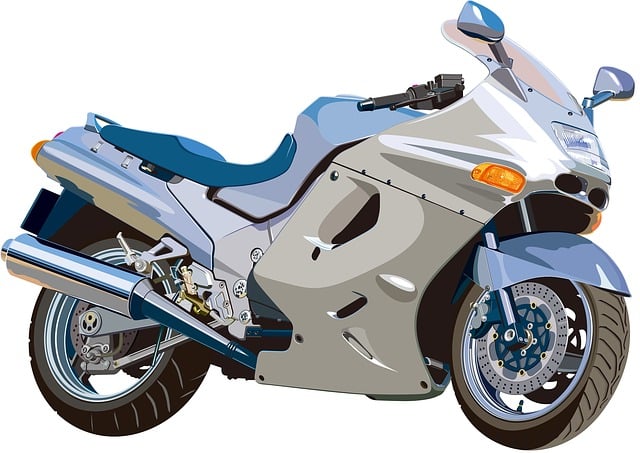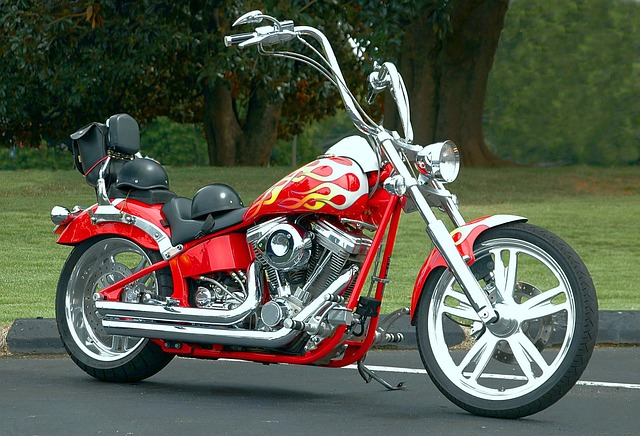Maintaining a motorcycle battery is crucial for consistent performance and avoiding unexpected failures. Batteries typically last two to four years but can be affected by environmental factors, type, and usage patterns. Regular maintenance, proper storage, and frequent charging can extend battery life, with keeping the battery charged being particularly important for longevity. Be mindful of how extreme temperatures impact battery performance; cold slows down chemical reactions while heat speeds up self-discharge. Riders should perform regular inspections to catch issues like reduced charge capacity or physical distortions early, and keep track of their battery's age to prevent issues on the road. Aging batteries may show signs such as a swollen casing, weakened performance, longer cranking times, inconsistent voltage readings, or the need for frequent jumps, all of which indicate it's time for replacement. Regular terminal maintenance is also vital; corrosion can cause high resistance and impede battery efficiency. Always check terminals for damage, clean them as needed, and secure connections to ensure your motorcycle battery remains reliable and your riding experience is uninterrupted.
When it comes to maintaining your motorcycle in peak condition, understanding the health of your motorcycle battery is paramount. A battery nearing its end can lead to frustrating starts and unexpected letdowns. This article delves into the key indicators that signal it’s time for a new motorcycle battery. From assessing lifespan to monitoring voltage readings and spotting signs of corrosion, we’ll guide you through the essentials to ensure your ride starts purring every time. Recognizing these signs early can save you from the inconvenience of being stranded, so keep an eye on your battery’s performance and make an informed decision when it’s due for a replacement.
- Understanding the Lifespan of a Motorcycle Battery
- Signs of Diminishing Battery Health: Swollen Battery Cases and Bulging Seals
- Sluggish Starts and Prolonged Engine Cranking Times
- Unreliable Battery Voltage Readings and Charging Efficiency
- Frequent Jumps and Decreased Battery Hold Time
- Corroded or Cracked Battery Terminals and Connections
Understanding the Lifespan of a Motorcycle Battery

When it comes to maintaining your motorcycle in optimal condition, understanding the lifespan of a motorcycle battery is crucial for uninterrupted rides. Typically, a standard motorcycle battery lasts between two to four years, though this can vary based on factors such as climate, battery type, and how often the bike is used. Regular maintenance and monitoring can help extend the life of your battery. Factors like storage conditions, frequency of charging, and the state of charge at which the battery is kept can significantly influence its longevity. For instance, batteries should ideally be kept at a full or near-full state of charge to maximize their lifespan. It’s also important to note that extreme temperatures can shorten the life of a motorcycle battery. In cold weather, the chemical reactions within the battery slow down, reducing its efficiency and capacity. Conversely, high temperatures can lead to accelerated self-discharge. To ensure your battery remains reliable, it’s advisable to inspect it regularly, checking for signs such as a diminished ability to hold a charge, swelling, or a bloated casing, which are indicative of a weak or failing battery. Monitoring the date of purchase and setting reminders for annual checks can help you stay ahead and plan for a replacement before you’re stranded with a dead battery.
Signs of Diminishing Battery Health: Swollen Battery Cases and Bulging Seals

When a motorcycle’s battery exhibits signs of diminishing health, it’s imperative to address these issues promptly to avoid stranding or damage to your bike. One clear indicator of a failing battery is the physical condition of its casing. A swollen battery case can be a telling sign that the battery is no longer holding charge as it should. This swelling often occurs when the internal chemistry causes gas to accumulate, stretching the plastic or metal casing beyond its limits. The seals within the battery, designed to keep the electrolyte solution contained, may also start to bulge as a result of this pressure. This not only indicates that the battery is reaching the end of its lifecycle but also poses a safety risk, as a compromised case can lead to leakage or even rupture. If you observe these changes in your motorcycle battery, it’s advisable to replace it immediately. Not only will this prevent potential hazards, but it will also ensure that your motorcycle starts reliably and maintains optimal performance. Regular inspection of the battery for any physical distortions or bulging is a crucial part of motorcycle maintenance and can save you from unexpected troubles on the road.
Sluggish Starts and Prolonged Engine Cranking Times

When a rider turns the key and experiences sluggish starts, it may be a sign that the motorcycle battery is nearing the end of its service life. This phenomenon occurs when the battery struggles to provide enough current to the starter motor, resulting in a slow engine response. The cranking time, which is the duration it takes for the engine to start after turning the ignition, will also become prolonged. Typically, a healthy motorcycle battery should crank the engine for approximately 2 to 3 seconds before the engine fires up. If your bike’s cranking time exceeds this range and you notice the motor revving less vigorously than usual, it’s a strong indication that the battery’s capacity is diminishing. This issue can be exacerbated in colder temperatures when batteries naturally lose some of their power. Regularly checking the battery’s voltage with a multimeter or a dedicated battery tester can help diagnose these issues early on, allowing for timely replacement and ensuring your motorcycle starts reliably every time you ride. Maintaining the battery with regular charging and proper storage when not in use can also extend its lifespan and prevent unexpected mechanical downtime.
Unreliable Battery Voltage Readings and Charging Efficiency

When a motorcycle battery begins to falter, one of the first signs is inconsistent voltage readings. A fully charged motorcycle battery typically operates at around 12.6 volts. As the battery ages or approaches the end of its lifecycle, it may struggle to hold this charge steadily. Monitoring the voltage with a multimeter can reveal fluctuations that indicate the battery’s ability to retain and deliver power is waning. This unreliability in voltage readings is often a precursor to reduced charging efficiency, a critical function for a motorcycle battery’s health. Charging efficiency encompasses the battery’s capacity to recharge during operation and store energy effectively. A decline in this efficiency can manifest as a longer recovery time after discharges or failure to fully charge, even when the engine is running. This is particularly detrimental for motorcycle batteries because of their smaller size and the less forgiving environments they often endure. Regular maintenance checks, including voltage monitoring and amp-hour testing, are essential to catch these issues early. By paying close attention to your motorcycle battery’s performance, you can prevent unexpected breakdowns and ensure that your ride remains reliable. It’s advisable to replace the battery if it consistently fails to maintain optimal voltage levels or exhibit the expected charging efficiency, thereby safeguarding your motorcycle’s performance and longevity.
Frequent Jumps and Decreased Battery Hold Time

When your motorcycle battery consistently requires jumps to start, it may be an indicator that its lifespan is nearing an end. Repeated reliance on a jump start can strain the battery and its associated components, leading to a faster degradation of performance. A healthy motorcycle battery should hold a charge well, but if you notice that your bike’s battery is losing its ability to maintain a full charge over shorter periods compared to before, it’s a clear sign that it might soon need replacement. This decrease in battery hold time can be due to internal wear and tear, sulfation buildup, or a reduction in the battery’s capacity due to aging. Regular maintenance, such as keeping the terminals clean and ensuring the battery is charged properly, can help prolong its life, but it won’t reverse the natural degradation that occurs over time. Pay close attention to these motorcycle battery indicators, as they are crucial for preventing roadside emergencies caused by a dead battery. It’s always prudent to stay proactive with maintenance and be mindful of these signs to ensure your motorcycle remains reliable and ready for your riding adventures.
Corroded or Cracked Battery Terminals and Connections

When assessing the health of your motorcycle’s battery, one critical aspect to inspect is the condition of the battery terminals and connections. Corrosion on terminals can significantly impede the battery’s ability to hold a charge or accept current. A buildup of corrosive material, often visible as a white or greenish substance around the terminals, can form electrical resistance points that reduce efficiency and may even lead to a dead battery. To prevent this issue, regularly clean the terminals using a baking soda paste and a soft brush, then rinse with water and dry thoroughly. After cleaning, inspect the terminals for any cracks or damages. Cracked or frayed connections can compromise the electrical flow and potentially cause a short circuit, which could lead to battery failure or even pose a safety risk. Ensure that the cables are securely fastened, and replace any terminal that shows signs of wear or damage. Remember, maintaining clean and intact terminals and connections is essential for your motorcycle’s battery longevity and performance. Regular checks and prompt maintenance can prevent problems before they escalate, safeguarding your riding experience.
When maintaining your motorcycle, vigilance is key, particularly concerning your motorcycle battery’s condition. A well-functioning battery is pivotal for a smooth ride; thus, staying attuned to its health through regular checks can save you from unexpected mishaps on the road. If you notice any of the signs mentioned—such as swollen or bulging cases, sluggish starts, prolonged cranking times, inconsistent voltage readings, frequent jumps, or corroded terminals—it’s a clear indication that your battery may be on its last legs and in need of replacement. Don’t let these issues derail your journey; address them promptly to ensure you have a reliable power source for your motorcycle. Remember, the longevity and performance of your motorcycle battery significantly impact your overall riding experience.
